How Many People Die Due To Snakebites In The US?
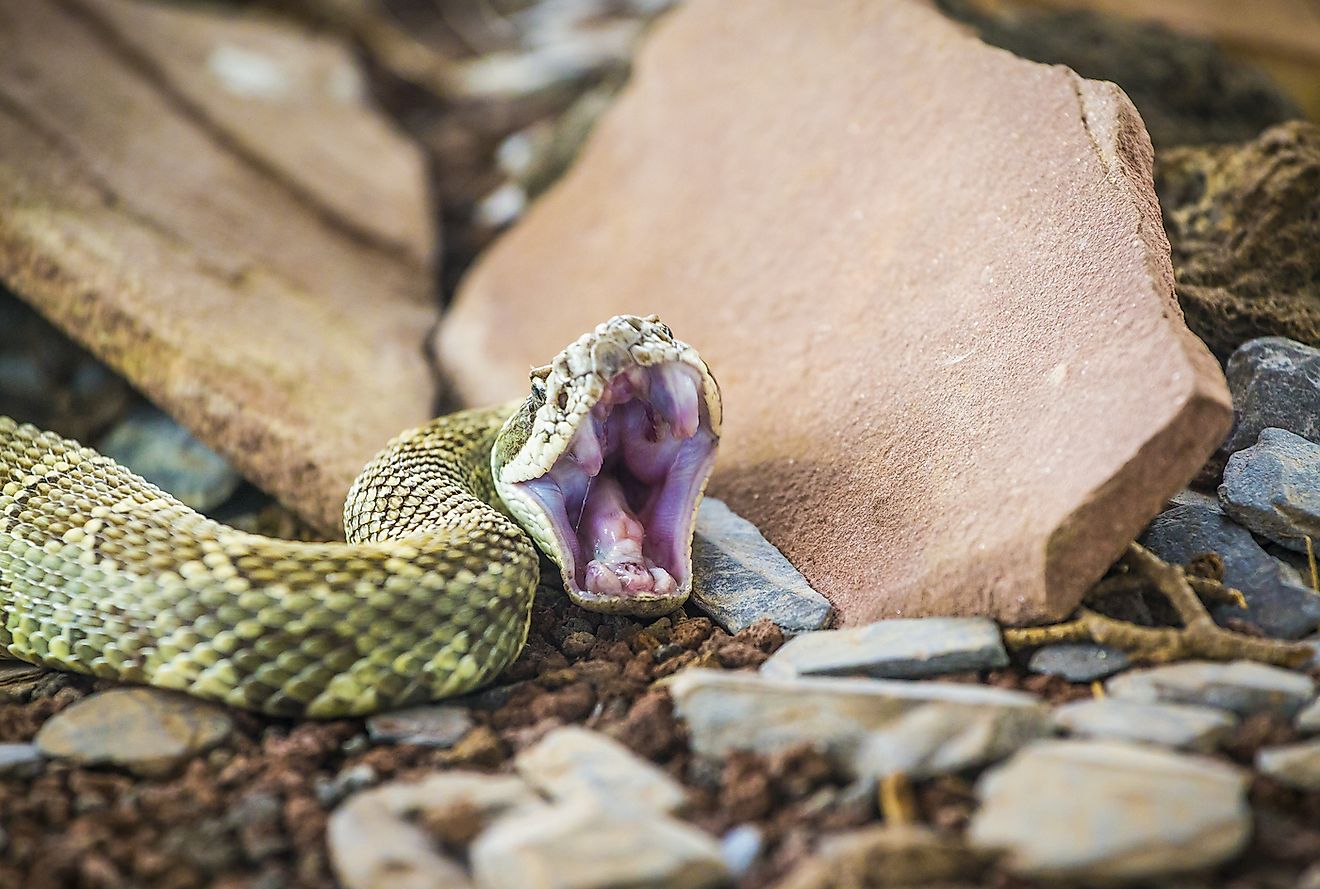
- Rattlesnakes are the largest venomous snake in the US, and between 10-44% of patients with this type of bite end up with a permanent injury or disability.
- Coral snakes are red, black, and yellow, and are highly venomous but love to hide and would prefer to run from you than bite you.
- Somewhere between 81,000 and 138,000 people die each year worldwide from snake bites.
Snakebites are a real threat worldwide. According to the World Health Organization (WHO), each year between 81,000 and 138,000 people die from being bitten by a venomous snake, and an additional 400,000 become permanently disabled. In the US, the Centers for Disease Control and Prevention (CDC) state that about five people die each year from the same cause. This number would be much higher if people did not seek out medical care promptly upon being bitten.
Rattlesnakes, cottonmouths, copperheads, and coral snakes are the most venomous snakes living wild in the US, and people working in certain jobs are more vulnerable to their attacks than others. While snakes can attack anyone in areas in which they are prominent, individuals who work outside in farming, gardening, painting, groundskeeping, roofing, and other outdoor professions are at a much greater risk of coming in contact with a venomous snake.
Venomous snakes live in a wide variety of habitats in the US, including swamps, forests, grasslands, and deserts. Thankfully, there are treatments that can save your life if you are bitten. Learning how to avoid these snakes can be one of the best ways of protecting your life and that of those you care for. Here are some of the most common venomous snakes in the US.
Rattlesnakes
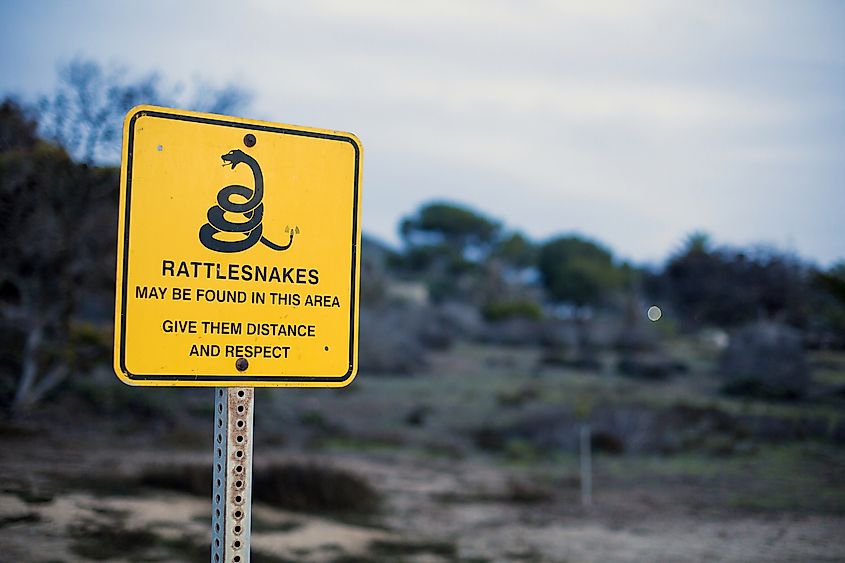
Rattlesnakes come in many varieties in locations across the US. These snakes are the largest venomous snakes found in the wild in the country and their bite can be fierce. According to the CDC, between 10 to 44% of patients with rattlesnake bites end up living with a permanent injury or disability, such as the loss of a finger.
Rattlesnakes are said to lie dormant in the winter, and come out of hibernation in March and April. They often “rattle” their tail in warning before striking, but they do not always do this, so be aware of your surroundings when outdoors.
About 8,000 people are bitten by rattlesnakes each year in the US. Thankfully, the snake can only strike within a distance equal to half its length. Stay back.
Cottonmouths/Water Moccasins
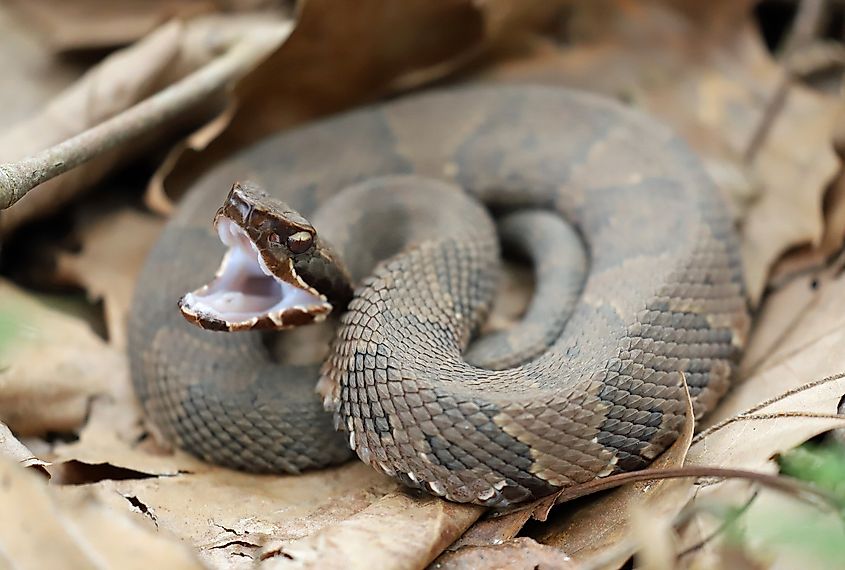
These venomous snakes are most often found in or around water, hence their name. The water moccasin is said to be North America’s only venomous water snake, and they come in many colors. An adult’s skin can be tan, brown or almost black. These guys are about 2 to 4 feet (61 to 122 centimeters) in length and reside in the geographic area spanning from southern Virginia to Florida and over into Eastern Texas, in the southeastern US. Watch out for these snakes perched on rocks or branches in the sun when visiting swamps, marshes, ditches, ponds, lakes, and streams.
Copperheads
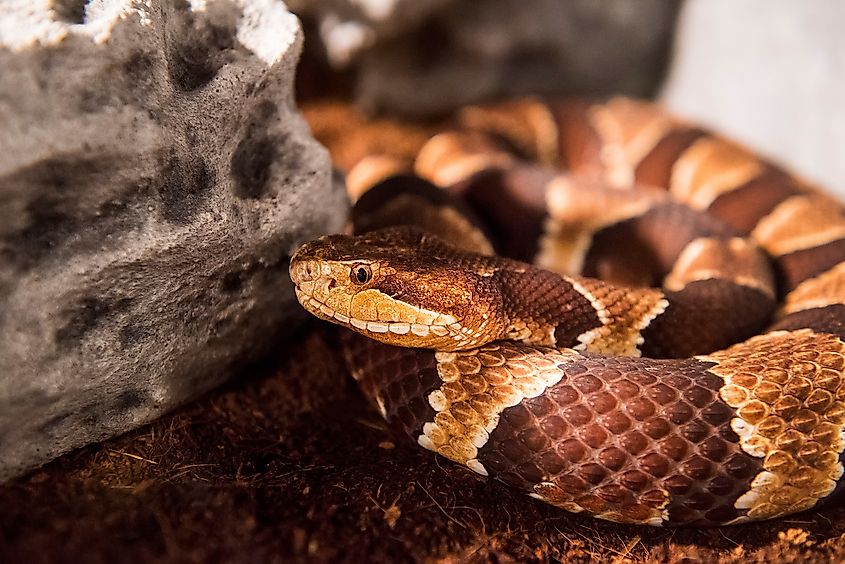
If you see a reddish or golden tanned snake slithering in near a swamp anywhere between the Florida panhandle north to Massachusetts and west to Nebraska, it could be a copperhead. These snakes can climb low branches or trees in pursuit of their prey. They also love to bask in the sun, like many other snakes, and can be found living in a wide range of habitats from forested hillsides to wetlands and construction sites. Copperheads return to the same den each year and like to live near each other.
Coral Snakes
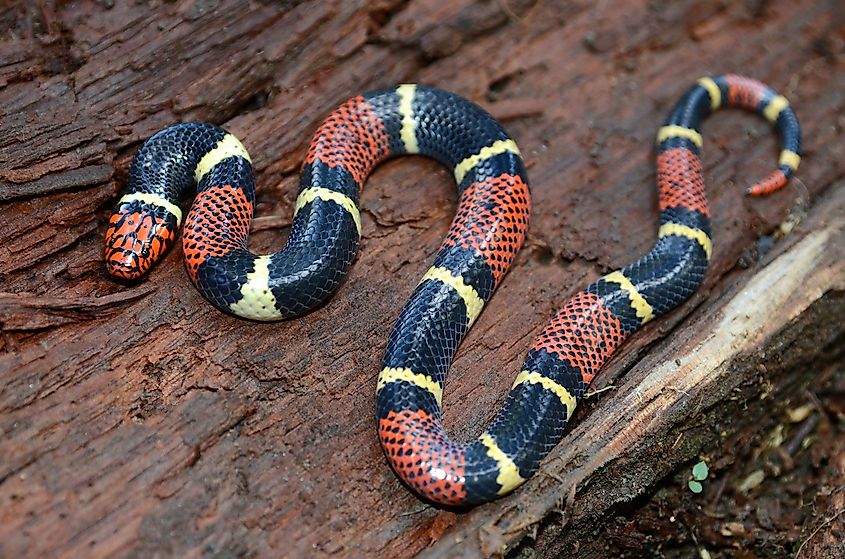
Coral snakes are related to mamba, cobra and sea snakes. They can be found in sandy, marshy, and forested areas in the southeastern US and they are usually hiding underground where you cannot see them. Brightly colored, coral snakes generally have red, yellow and black stripes that can make them easy to spot when they do surface. Thankfully this snake is pretty reclusive, as it has some of the most potent venom in all of North America. This snake will more often run away from you than try to strike.
Symptoms And First Aid
Anyone bitten by a venomous snake should seek immediate medical attention, as bites, even those that appear to be minor, can be deadly. The CDC advises you avoid tall grass and piles of leaves when outdoors. It can also be a good idea to stay away from rock and wood piles that can house hiding snakes. Many snakes are most active at sunrise and sunset, and it is wise to wear gloves when handling any kind of debris outside.
If you are bitten by a venomous snake you may experience a variety of symptoms. These include puncture wounds in your skin, swelling and redness, bleeding, blistering, pain, nausea, vomiting, diarrhea, trouble breathing, a weird taste in your mouth, numbness, twitching muscles, disturbed vision, and a rapid or weakening pulse.
The CDC advises that you never try to treat yourself when bitten, and that you avoid folk therapies and things like applying a tourniquet or sucking out the venom. These practices can make your symptoms worse and potentially endanger your life.
It is a good idea to remove your rings and watches if you are bitten and to clean your bite with soap and water. Mark the location of the bite with a marker, noting the time on your skin as well. Take a photo of your injury and have someone else drive you to the hospital to receive antivenom without delay.











